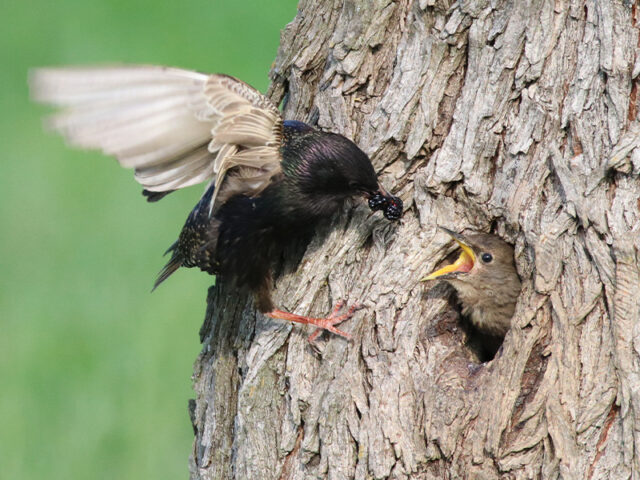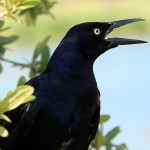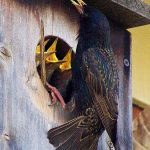Dateline – May 13, 2021 – Carrollton, Texas

European Starlings are cavity nesters. They will readily make use of both man-made and natural cavities. Knotholes and abandoned woodpecker nests are prime locations. As are birdhouses and building nooks and crannies.
Ordinarily, starling nest are built well off the ground—10 to 25 feet up is common. But, the one I’m about to share with you in the pictures below is a little different. This starling nest was located in a knothole on the trunk of a Mesquite tree only a foot or so above the ground. Unusual in my experience!
Starlings are dedicated parents, and the two adults made multiple food deliveries while I was on site. European Starlings are omnivores, so a wide variety of things were included on the menu for the baby birds. In the accompanying photographs you will find the adults bringing back wasps, caterpillars, spiders, and mulberries to feed their offspring.
An ordinary starling clutch will consist of 3 to 6 eggs. The cavity in this tree trunk must be fairly spacious to accommodate a brood of that size. There was no way for me to verify exactly how many juveniles this nest contained, but it did become possible to differentiate the two adult birds to a degree. One of the adult’s beak was stained a reddish color with mulberry juice. This was starkly different from the yellow beak seen on the second adult bird.
The juveniles in this tree cavity are several weeks old and nearly ready to fledge. It will only be a matter of hours from the time these pictures were taken before they are ready to leave the nest for good.


The cavity inside must be spacious in order to accommodate a full brood of babies


bugs for their babies to eat, and other times they would bring berries


































